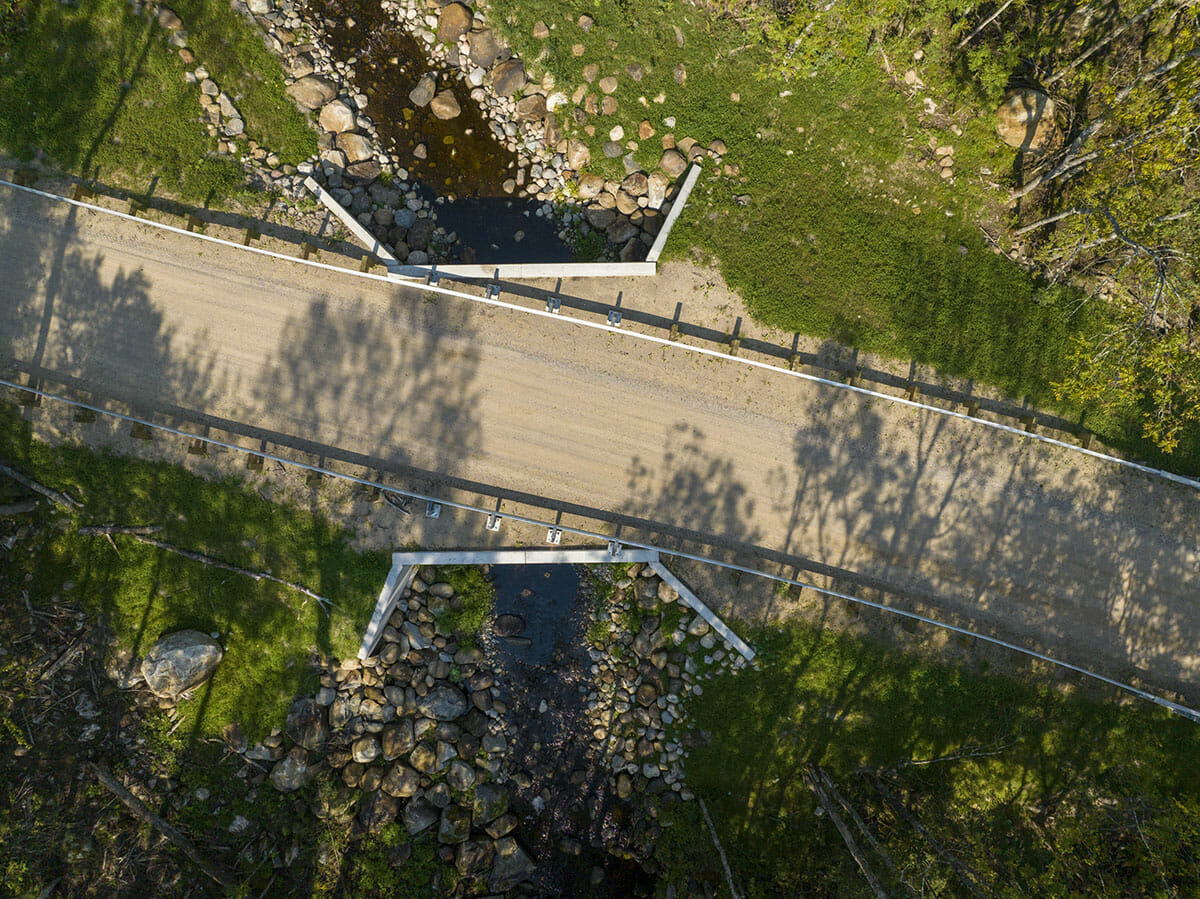
TU is working in six of 10 landscapes highlighted for attention by White House CEQ
Contacts:
- Chris Wood, President and CEO, Trout Unlimited
- Austin Williams, Director of Federal Relations, Trout Unlimited
- Warren Colyer, National Restoration Director, Trout Unlimited
- David Kinney, VP for Communications, Trout Unlimited, 856-834-6591
Trout Unlimited media resources: https://tu.org/about/media
WASHINGTON, D.C.—The White House Council on Environmental Quality this week highlighted “for focused attention” a group of 10 Transformational Fish Passage Projects, major watershed restoration projects across the country that are helping ecosystems recover and making communities more resilient in the face of climate change.
Trout Unlimited is a leading partner in six of the landscapes, where millions of dollars in investments made possible by the Bipartisan Infrastructure Law and Inflation Reduction Act are increasing the pace of our work and the scale of our impact on trout and salmon, rivers and streams, and the communities that depend on them.
“Once-in-a-generation investments are making it possible for us to recover our wild and native trout and salmon while at the same time creating family-wage jobs and helping communities address and prepare for floods, drought and wildfire in an age of climate change,” said Chris Wood, President and CEO of Trout Unlimited. “The work happening in these places is truly transformational, for both fish and communities, and we are proud to be part of it.”
These are just a few of the hundreds of watersheds where TU is at work investing federal infrastructure funds to restore rivers and recover wild and native fish, leveraging more than $157 million from West Virginia to the Great Lakes to the Rockies and Pacific—everywhere trout and salmon call home.
Southeast Alaska
More salmon return to the 16.8 million acre Tongass National Forest than all the other national forests combined. However, historic logging and road building has left nearly 700 failing culverts that impede fish migration and fragment habitat. With funding from the Forest Service and NOAA Fisheries, Trout Unlimited is working to reconnect high-value fish habitat alongside tribes, federal and state agencies, community forest partnerships, and other allies. These projects benefit anadromous and resident fish populations, strengthen local workforces, and bolster the resiliency of infrastructure amid a changing climate. Since 2022, TU has removed or fixed nine fish barriers and expects to complete another 25 in the coming five years.
Learn more: https://prioritywaters.tu.org/tongass/
California North Coast
North Coast Coho and steelhead are endangered, but our work with partners to remove fish passage barriers, reconnect floodplains, decommission unneeded forest roads, and restore depleted streamflows is paving the way for recovery. Since 1998, TU’s California program has removed 14 major fish barriers, upgraded or decommissioned 1,441 road-stream crossings, treated 569 miles of roads, and placed more than 7,500 pieces of large wood in 130 miles of stream. In addition, we’ve worked with water users on voluntary projects to increase critical dry season streamflows for fish while enhancing water security and drought resiliency for farms and communities.
Learn more:
- https://prioritywaters.tu.org/north-coast-california/
- https://www.casalmonandsteelhead.org/solution/strongholds
Salmon SuperHwy, Oregon
The Salmon SuperHwy, a collaboration of Trout Unlimited, state and federal agencies, county government, and the agricultural community, is reconnecting 95 percent of historic fish habitat and building durable road infrastructure by replacing culverts and other fish migration barriers across six river basins draining into the Tillamook and Nestucca Bays. Beyond reconnecting key headwater spawning and rearing habitat, the Salmon SuperHwy is retrofitting tide gates and improving operations to expand and restore access to estuary habitat and restoring side channel and floodplain habitat.
Learn more:
Enloe Dam, Washington
In Washington’s upper Columbia Basin, Trout Unlimited is collaborating with state and federal agencies, regional partners, and local tribes to study and develop a feasibility and dam removal pathway for the Enloe dam, an effort that would open hundreds of miles of coldwater habitat to native salmon and steelhead.
Learn more:
Clark Fork River, Montana
Trout Unlimited is working with many partners to preserve and enhance the basin from the headwaters near Butte all the way to the Idaho border, helping protect and recover Westslope cutthroat and bull trout strongholds. This work includes rehabilitating the largest geographic complex of Superfund sites in the country, mitigating the impacts of historical mining, reconnecting tributaries, addressing the impacts of non-native species, and making landscapes more resilient in the face of drought and wildfire. This work is providing healthy fish and wildlife habitat and clean water for communities and agricultural operations.
Learn more: https://prioritywaters.tu.org/clark-fork-river/
Mount Baldy Headwaters, Arizona
With leadership from the White Mountain Apache Tribe, Trout Unlimited is collaborating with partners on a variety of restoration projects in the headwaters of the Salt River watershed to benefit Apache trout, the Arizona state fish that was recently removed from the Endangered Species list. Restoration projects on the White Mountain Apache Reservation and the Apache-Sitgreaves National Forests will lower water temperatures, improve spawning and rearing habitat and reconnect tributaries by fixing perched or undersized culverts. The idea is to help make these relatively small systems more resilient to the floods, wildfire and drought exacerbated by climate change.
Learn more: https://prioritywaters.tu.org/resilience/
More resources:
###
Trout Unlimited is the nation’s leading conservation organization dedicated to caring for and recovering America’s rivers and streams so future generations can experience the joy of wild and native trout and salmon. Across the country, TU brings to bear local, regional, and national grassroots organizing, durable partnerships, and science-backed policy muscle on behalf of trout and salmon fisheries, healthy waters, and vibrant communities.

